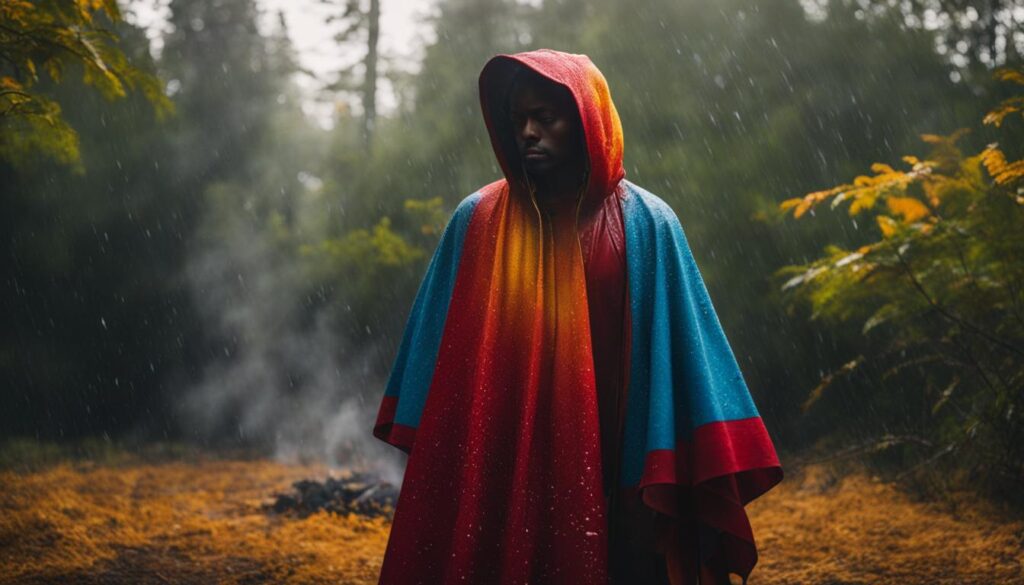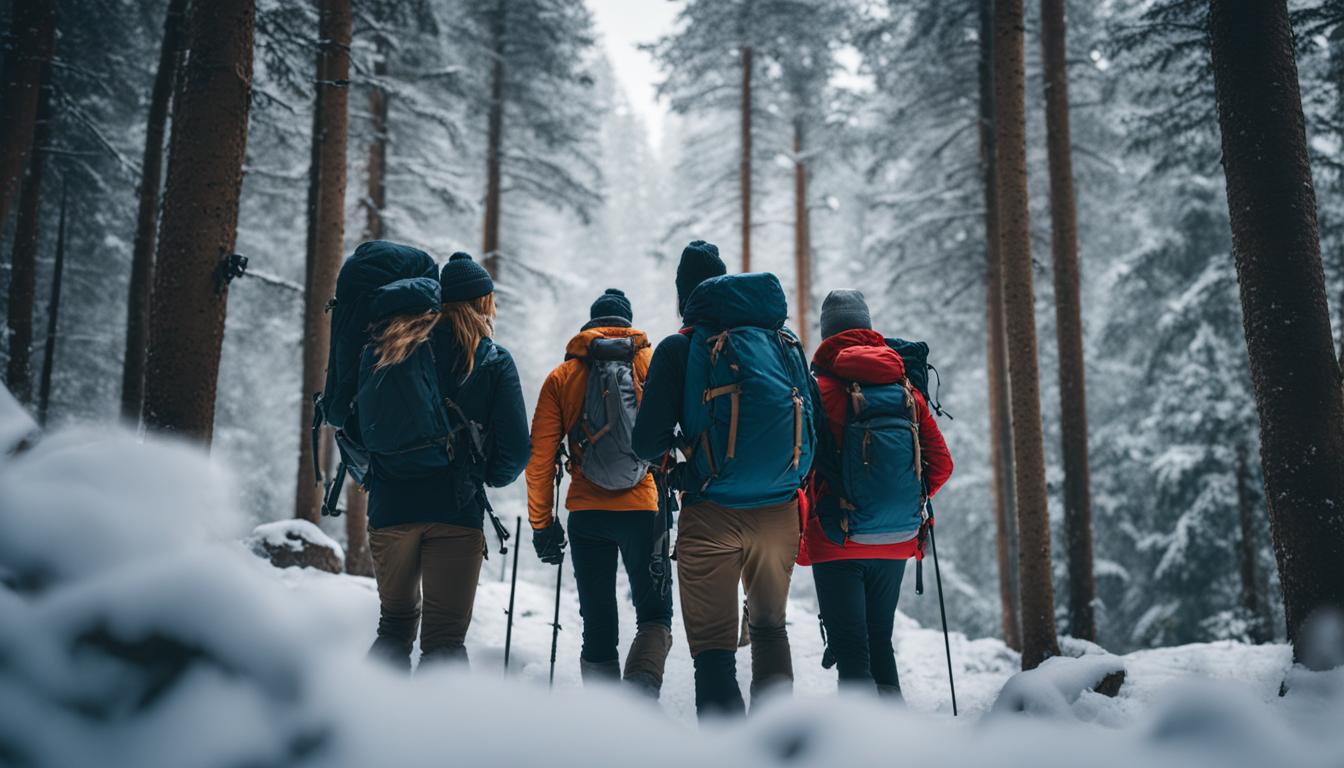When it comes to backpacking, the weather can make or break your outdoor adventure. It’s essential to be prepared for various weather scenarios to ensure a safe and enjoyable experience. In this article, I will provide you with expert tips and strategies for backpacking in different weather conditions, based on factual data.
Whether you’re facing scorching heat, pouring rain, or chilly winds, having the right strategies in place can make all the difference. From packing the appropriate gear to adjusting your itinerary, these backpacking tips will help you navigate through various weather conditions with ease.
So, grab your backpack and get ready to conquer the great outdoors, no matter what weather conditions come your way!
Key Takeaways:
- Prepare for different weather scenarios to ensure a safe and enjoyable backpacking experience.
- Pack appropriate gear such as rain gear and layering options to stay dry and warm in wet weather.
- Follow expert tips for hiking in the rain to protect yourself from the elements.
- Adjust your itinerary and plans based on the weather conditions to stay safe.
- Remember, with the right strategies and preparations, you can have a successful backpacking trip, no matter the weather!
Staying Dry and Warm in Wet Weather

When venturing into the outdoors, it’s crucial to be prepared for wet weather conditions to ensure a comfortable and safe backpacking experience. With the right strategies, you can stay dry and warm even when faced with rain and other wet weather scenarios.
1. Invest in quality rain gear: A waterproof and breathable rain jacket and pants are essential for keeping the rain out and allowing moisture from sweat to escape. Look for gear made with durable materials and fully taped seams to ensure maximum protection.
2. Layer up effectively: Layering is key in wet weather. Start with a moisture-wicking base layer to keep your skin dry, followed by a warm insulating layer like fleece or down. Top it off with a waterproof outer layer to shield yourself from the rain. This layering system allows you to adjust your clothing based on the intensity of the rain and your activity level.
3. Protect your gear: Keep your backpack and other essentials dry by using waterproof covers or dry bags. Pack your items in separate waterproof compartments to prevent water from seeping in. Additionally, consider using waterproof cases for your electronics and valuable items to ensure they stay dry and functional.
By implementing these strategies, you can stay dry and warm in wet weather, allowing you to fully enjoy your backpacking adventure without discomfort or safety concerns.
Table: Rain Gear Essentials for Wet Weather
| Item | Description |
|---|---|
| Rain Jacket | A waterproof and breathable jacket to keep you dry and comfortable in the rain. |
| Rain Pants | Waterproof pants that provide additional protection for your legs against rain and moisture. |
| Waterproof Boots | Sturdy boots with waterproof membranes to keep your feet dry and prevent discomfort. |
| Base Layer | Moisture-wicking clothing designed to keep your skin dry and regulate body temperature. |
| Insulating Layer | Fleece or down jackets and pants that provide warmth without retaining moisture. |
| Waterproof Cover/Dry Bag | A protective cover or bag to keep your backpack and essentials dry. |
Expert Tips for Hiking in the Rain
When it comes to hiking in the rain, staying dry and warm is essential for a comfortable and enjoyable outdoor adventure. Here are some expert tips based on factual data to help you navigate through the rain and protect yourself:
1. Invest in quality rain gear: A waterproof jacket and pants are a must-have for hiking in the rain. Look for gear that is both breathable and durable, as it will keep you dry without trapping moisture inside. Additionally, don’t forget to pack a waterproof cover or liner for your backpack to protect your gear from getting soaked.
2. Layer up strategically: Layering is key when it comes to staying warm in wet weather. Start with a moisture-wicking base layer to keep sweat away from your skin. Add a mid-layer for insulation, such as a fleece or synthetic jacket, and top it off with a waterproof and breathable outer shell. This combination will not only keep you warm but also allow moisture to escape, preventing you from feeling clammy.
3. Focus on footwear: Wet trails can be slippery, so having proper footwear is crucial. Opt for waterproof hiking boots or shoes that offer good traction. It’s also advisable to bring extra pairs of socks to keep your feet dry throughout your hike. Don’t forget to waterproof your boots regularly to maintain their effectiveness.
4. Protect your belongings: In addition to your rain gear, it’s essential to protect other items you’re carrying. Use waterproof bags or dry sacks to safeguard your electronics, food, and any other moisture-sensitive items. This extra precaution will ensure that your essentials stay dry and functional during your hiking trip.
How Can I Use Backpacking Strategies for Extreme Weather Scenarios?
When facing backpacking in extreme weather, it’s crucial to pack the right gear. Choose waterproof, insulated layers to stay dry and warm. Research the terrain and weather conditions in advance. Have a backup plan and always keep safety as your top priority.
FAQ
What are some backpacking strategies for different weather scenarios?
It’s important to be prepared for different weather conditions when backpacking. Here are some expert tips to help you strategize for different weather scenarios based on factual data.
How can I stay dry and warm in wet weather?
Staying dry and warm in wet weather is crucial for a comfortable and safe backpacking experience. Here are some strategies to help you achieve this based on factual data.
What are some expert tips for hiking in the rain?
Hiking in the rain requires specific strategies to stay dry and warm. Here are some expert tips based on factual data.

